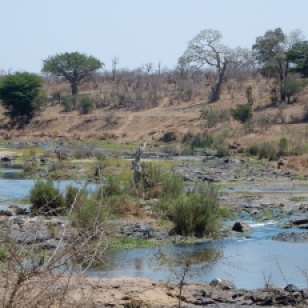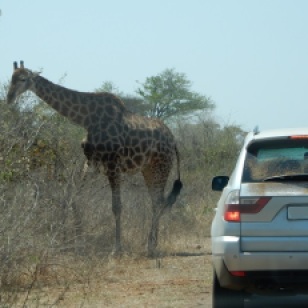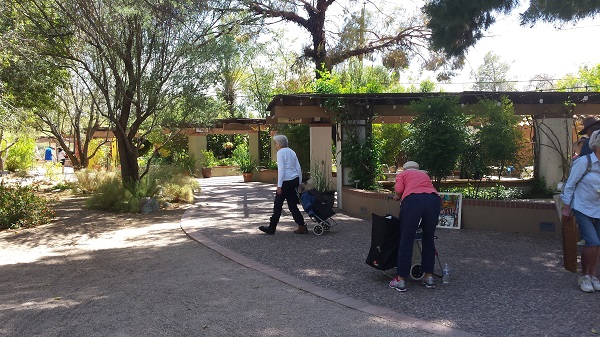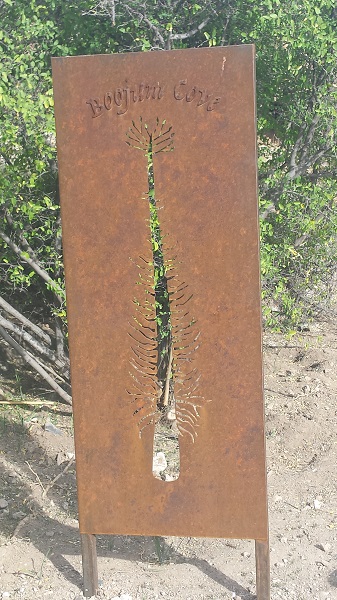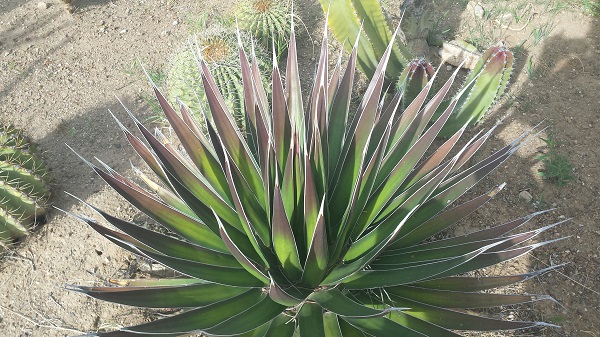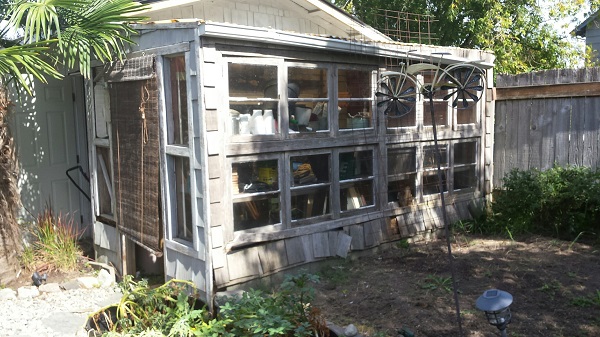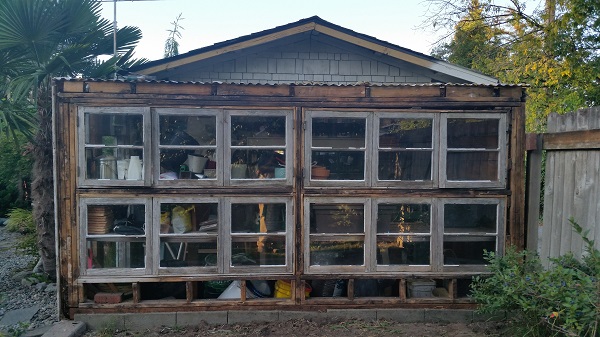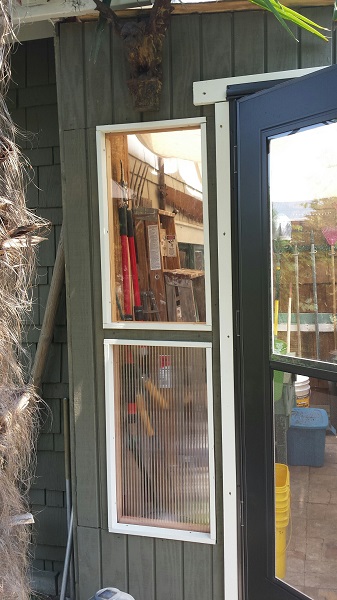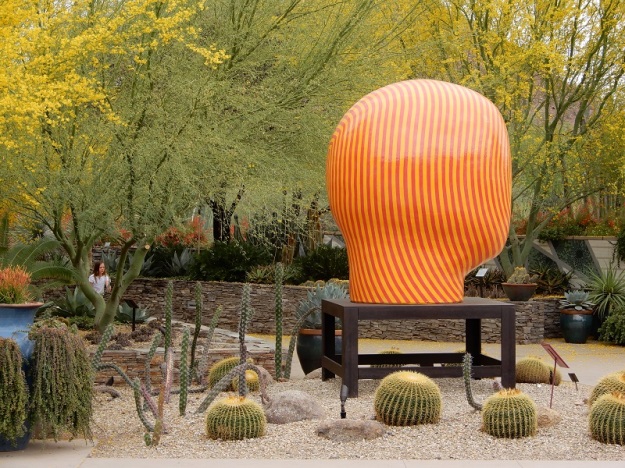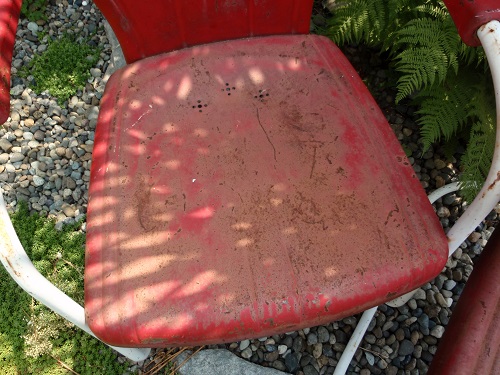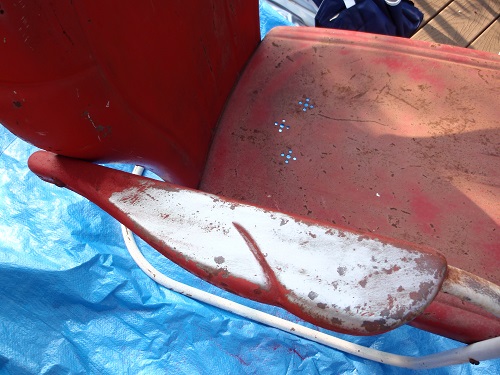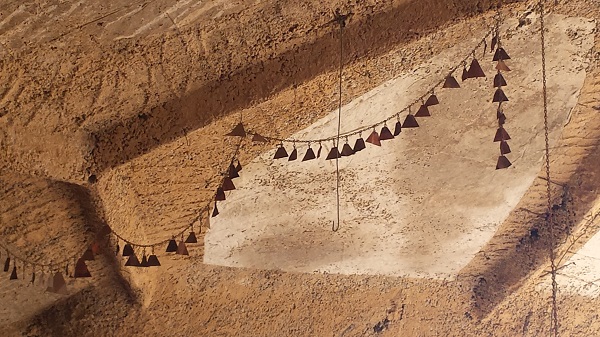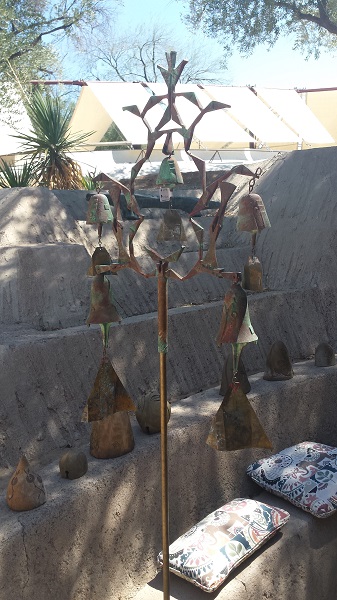More from Kruger National Park, South Africa
[Read Part 1 and Part 2 here.]
“Wouldn’t it be funny,” I mused to Eric as we went to bed on our first night at Lower Sabie rest camp, “to wake up to baboons on our porch in the morning?”
Morning came, and with it, a scurrying and thumping on our bungalow’s thatched roof. A family of baboons was making the rounds of camp, looking to thieve any food the humans hadn’t locked up. The little ones were fun to watch, kind of cute (if you can say that about a baboon) as they vaulted from roof to roof, but the mamas were don’t-mess-with-me large and decidedly unfriendly looking as they walked methodically from kitchen to kitchen. One could tell they followed this routine every morning. They successfully robbed our neighbors, who’d forgotten to secure their breakfast!
We met Jacqui and Kevin for breakfast in the main lodge, then we hit the road in search of more animals. Our plan was to cover the southeast corner of the park. We again crossed a bridge over the Sabie River.
Once again, we were fortunate to meet many animals close to the road. This is what I mean by “close to the road”:

A perfect profile.
Some animals, though, were already hiding from the midday heat. If we hadn’t looked closely, we’d have missed this lion, resting in the shade. The two hyenas were nearly invisible, even though we passed quite close to them.
We stopped to take a brief snack break at a another rest camp. This one featured glamping tents (the only kind of tent I would willingly inhabit anymore). Plus, it seemed to include a cute little antelope of unidentified species.

This tent came with a tiny something-bok.
I didn’t realize this mama elephant, who was determined to cross the road between Kevin and Jacqui’s car and ours, was hiding her baby behind her. Of course, we let her pass. When an elephant looks you in the eye, it tends to stop you in your tracks.

Waiting to cross the road with her baby hiding behind her (on the right). Who could resist that face?
That afternoon, we drove past the rock outcropping where we’d seen the lioness the day before. She was still there. Word passed from car to car that she’d taken down an impala earlier, but we didn’t see any evidence.

Hello again, your highness.
And later, there was this beast — a blue wildebeest. He looked so intimidating as he walked near my side of the car … something about those sharp horns.

Big blue looked a little crazy.
Suddenly — warthogs! They run amazingly fast, with their tails straight up in the air. Their manes look like dried grass.

A family of warthogs out for a stroll.
Because we’d decided to do a self-driving safari instead of going to one of the luxury safari lodges (where park rangers take you off-road in those big, open safari vehicles), Jacqui was concerned we wouldn’t see many animals and we’d be disappointed. As you can see, she needn’t have worried. But just in case, she’d signed us up for a couple of ranger-escorted drives. Our first was a three-hour sunset drive that evening.
As we cruised along, we saw many of the same animals that we’d been seeing during the day: elephants, zebra, giraffes. After sunset, our guide encouraged us to use the provided torches (spotlights) to look for eyeshine in the dark. Once the sun goes down it gets dark quickly.

Brief but beautiful sunset colors.
It wasn’t long before someone cried out, “Leopard!” I don’t know how they recognized the leopard in the pitch-black night, but sure enough, there she was, perched in a tree. She didn’t care for being in the spotlight, so she climbed down and lay beneath the tree, patiently waiting for the darned tourists to leave. I was unable to take an in-focus shot due to the darkness and the motion of a bus full of excited people, but Eric got some good shots.

Leopard in the spotlight.
We had been in the park for only two days and we’d already seen the Big Five (lion, leopard, elephant, rhino, Cape buffalo)! Kevin admitted that he’d been coming to the Kruger for 20 years before he saw a leopard. Maybe we were enjoying beginners’ luck? More likely, the dry, early spring was working in our favor. With most of the vegetation not yet leafed out and animals forced to come to the rivers or manmade watering holes, odds were better that we’d see more wildlife. Plus, Jacqui and Kevin were so familiar with the park. They were great guides.

Colors changed constantly. The bright green in the background is sugar cane fields, outside the park.
The next morning, we left Lower Sabie rest camp to travel further north. Our destination, Satara rest camp, was 140 kilometers (85 miles) away. The Kruger has tarred (paved) roads between its camps, with a speed limit of 50 kph (30 mph), so it would take almost three hours to make the journey, and that’s without stopping for food or animals.
To tie us over until our brunch stop, Jacqui offered us some muesli rusks, which are hardened biscuits somewhat akin to biscotti, meant to be dunked in coffee. We were instantly hooked. Eric has since made them at home.

Mmm, rusks. Our new fave. [Pinterest]
Our first stop was Nkumbe viewsite, high on a rocky hill, which afforded an outstanding view of the immense plain below. This was one of few places we were able to get out of our cars to view wildlife at a safe distance.

Game trails lead to the water hole. Elephants have first dibs.

A handful of giraffes seek precious shade.
A few kilometers farther on, we stopped at Tshokwane picnic area for a braai breakfast. Kevin expertly fried eggs and diced tomatoes (a popular South African side dish, we discovered) in a shallow braai bowl, shaped like a wok. As we ate and the braai cooled, Cape glossy starlings perched on the edge of the bowl and picked at the hot leavings. We were entertained by vervet monkeys who scampered about the picnic area, boldly attempting to rob visitors of their food. Of course, baboons were getting into places they shouldn’t have.

Starlings gathering in the trees above our picnic table.

Nothing is safe from vervet monkeys.
Back on the road, we found more lions under a tree … females napping on one side, the male trying to stay awake on the other.

Five female lions napping in the shade …

While Big Daddy pretends to be awake.
I like this shot of three graduated sizes of elephants. Eric calls them “small, medium, and jumbo.” I noticed that most of the time, the available water was very muddy. But, when it’s the only water around, you drink.

Gathering at the watering hole.
I also like this picture of a giraffe near one of the many windmills, which pump water from cisterns into watering holes. This is a male giraffe — you can tell by the darker coloring.

Tall things.
We made it to Satara rest camp in plenty of time. Our bungalow was just a few buildings down from Jacqui and Kevin’s, and we joined them for a tasty braai dinner.
Another sunset, another day complete.

The end of another perfect day in the bush.
Next up: Part 4, where we say goodbye to the Kruger. Plus, lots of trees and birds!
Note: I’ve had some readers mention that they can’t enter comments on my site lately. Maybe it’s a WordPress glitch, but in an attempt to solve the problem, I’ve now eliminated the required name and email fields, so anyone should be able to comment … although I do appreciate knowing who you are!




